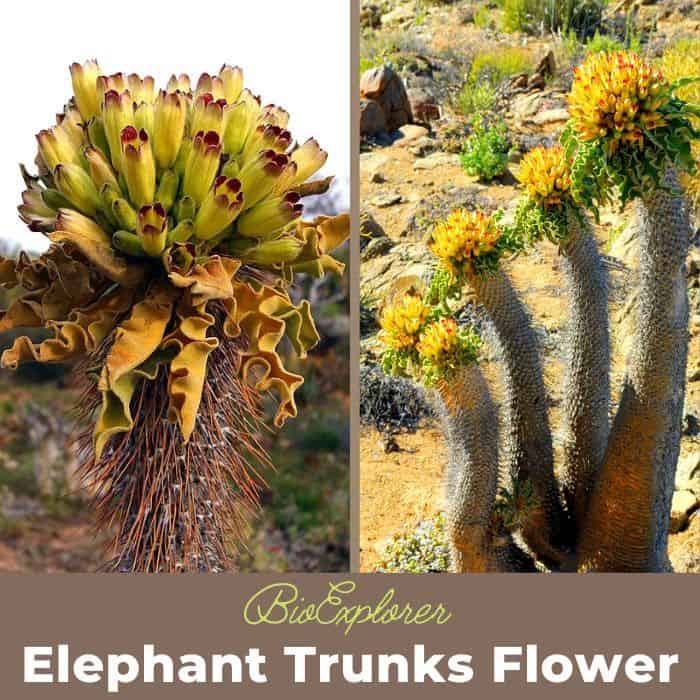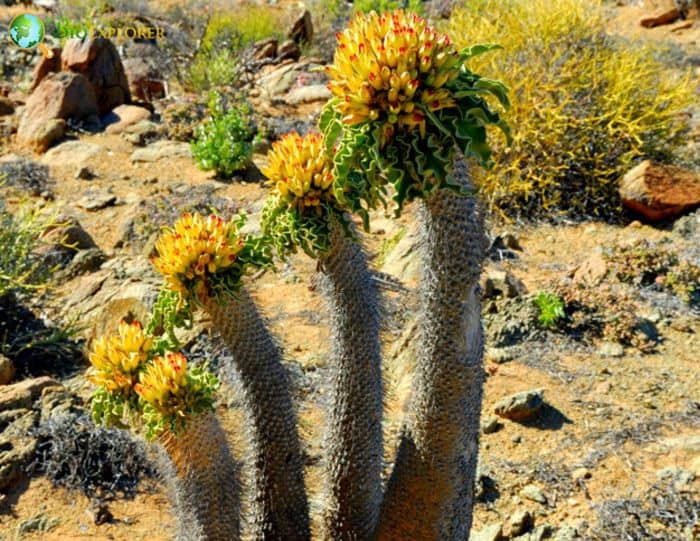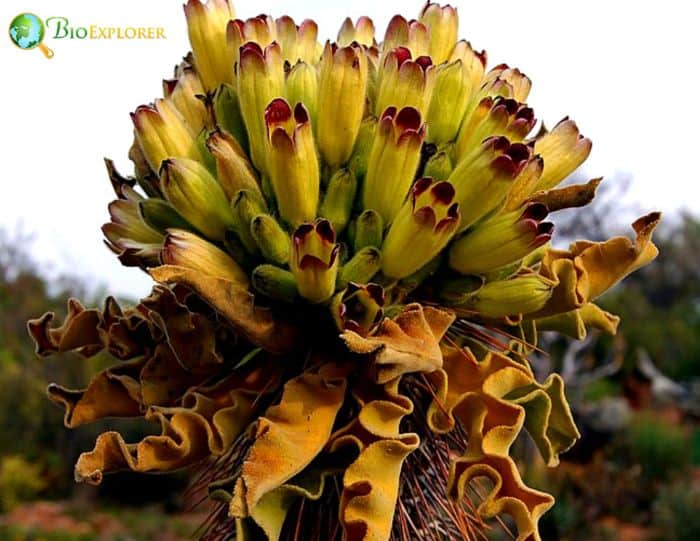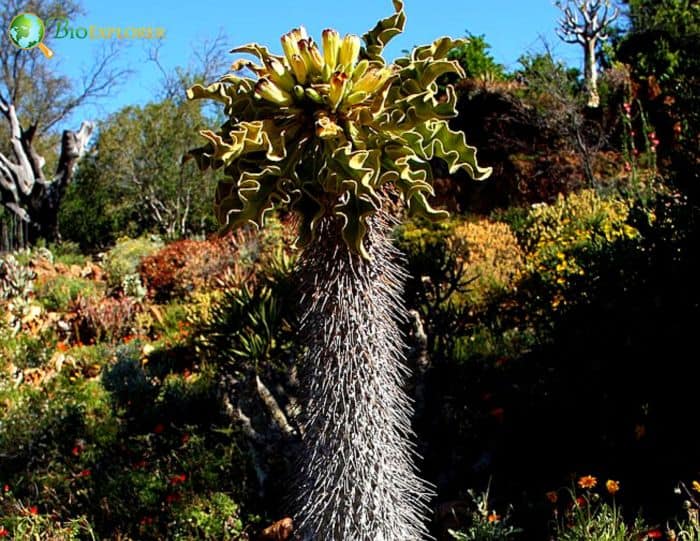
| Plantae | Gentianales | Apocynaceae | Pachypodium | Pachypodium namaquanum |
- Plant Type: Succulent
- Common Names: Halfmens, Elephant Trunk.
- Color: Red, yellow
- Flower Dimensions: 1.97 inches long and 0.39 across.
- Flowering Season: Winter (July-September).
- Desert with Elephant Trunks: Namib desert.
Elephant Trunks Flower Characteristics

Pachypodium namaquanumis a sought-after popular succulent of the Apocynaceae family. It is a large succulent from Northern Cape and southern Namibia.
- The elephant trunk has a treelike appearance when it is fully grown.
- The stems are cylindrical and primarily unbranched. It can grow between 1.5 and 2.5 meters tall. They are covered with warty tubercles with protruding spines.
- The leaves of the Elephant Trunks are simple, obovate to oblong, and borne in rosettes. The elephant trunks’ leaf margins are entire and very wavy.
- The flowers of the Elephant Trunks are tubular. They are red on the inside portion and yellow-green on the outer part.
- The fruits of the Elephant Trunks are horn-like and covered with dense grey hairs.

Elephant Trunks Facts

- Elephant trucks are also called “halfmens“[1] because they appear half Tree and half-human.
- The generic name Pachypodium is from the Greek words “pachys” and “podion, ” which means “thick” and “foot” respectively. The name namaquanumdenotes Namaqualand, the part of South America where this beautiful species is found.
- The sap of the Elephant trunks is used for arrow poison because it contains poisonous alkaloids. This desert flow can also cause blindness when it comes in contact with the eyes.
- There is a belief that when the spikes are stroked, it produces a sound that mimics the clicks of the language of Nama.
- The Elephant Trunk plant is linked to the story of the Halfmens. According to the story, the gods turned the members of a tribe into half-humans or halfmens.
Suggested Reading: Common Flowers | Little Yellow Flowers In Grass
Cite This Page
APA7MLA8Chicago
BioExplorer.net. (2025, January 02). Elephant Trunks. Bio Explorer. https://www.bioexplorer.net/plants/flowers/elephant-trunks/.
BioExplorer.net. "Elephant Trunks" Bio Explorer, 02 January 2025, https://www.bioexplorer.net/plants/flowers/elephant-trunks/.
BioExplorer.net. "Elephant Trunks" Bio Explorer, January 02 2025. https://www.bioexplorer.net/plants/flowers/elephant-trunks/.
















